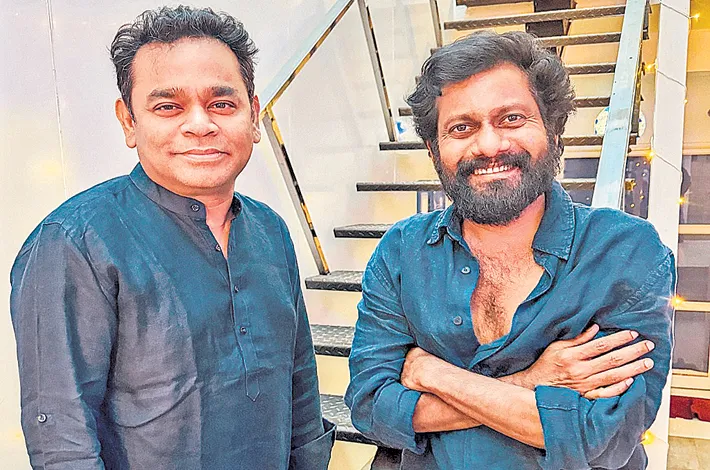Cooking as Meditation in the Indian Tradition
27-03-2025 12:00:00 AM

The Bhagavad Gita, a foundational Indian scripture, teaches that actions performed without attachment to outcomes lead to spiritual liberation. Cooking as seva embodies this principle. The cook pours their energy into the task not for praise or reward, but for the joy of serving. This detachment from personal gain fosters a meditative state, where the mind is free from desire and fully immersed in the act
In the rich tapestry of Indian culture, cooking transcends its utilitarian purpose of preparing food and emerges as a deeply meditative practice. Rooted in ancient traditions, this art form intertwines mindfulness, spirituality, and community, offering a pathway to inner peace and connection with the divine. For centuries, Indian households have treated the kitchen as a sacred space, where the act of cooking becomes a ritual of love, intention, and self-awareness. Far from being a mundane chore, cooking in the Indian tradition is a meditative journey that nourishes both body and soul.
The Sacred Kitchen: A Space for Mindfulness
In Indian homes, the kitchen is often considered a temple of sustenance. This reverence stems from the belief that food is a gift from the divine, intricately linked to life and well-being. The ancient texts of Ayurveda, India’s traditional system of medicine, emphasize that food prepared with care and positive intent can heal and uplift. Before cooking begins, many households perform small rituals—lighting a lamp, offering a prayer, or cleansing the space—to infuse it with purity and positivity. This mindful preparation sets the tone for cooking as a meditative act, where every step is deliberate and purposeful.
The process of cooking in this tradition demands presence. Whether it’s grinding spices on a stone mortar, kneading dough for chapatis, or stirring a pot of simmering dal, each action requires focus and patience. Unlike the hurried pace of modern life, traditional Indian cooking resists shortcuts. The rhythmic chopping of vegetables or the slow roasting of spices becomes a form of moving meditation, drawing the cook into the present moment. This mindfulness mirrors the principles of dhyana (meditation) found in yogic practices, where attention to breath and movement cultivates inner stillness.
The Role of Intention (Sankalpa)
Central to the meditative quality of cooking in Indian tradition is the concept of sankalpa, or intention. Food is believed to carry the energy of the cook, absorbing their thoughts and emotions. A cook who approaches the task with love, gratitude, and devotion infuses the meal with positive vibrations, while anger or distraction can taint it. This belief elevates cooking to a spiritual practice, where the cook becomes a conduit for nourishment on multiple levels—physical, emotional, and spiritual.
In many Indian households, meals are prepared as offerings to deities before being consumed by the family. Known as prasad, this sanctified food is shared with reverence, symbolizing unity with the divine. The act of cooking prasad—whether it’s a simple sweet like ladoo or an elaborate feast during festivals—requires a meditative mindset. The cook often chants mantras or sings devotional songs, aligning their energy with the sacred purpose of the task. This intentionality transforms the kitchen into a space of communion, where the boundaries between the self and the divine blur.
Sensory Engagement and Harmony
Indian cooking engages all the senses, making it a holistic meditative experience. The vibrant colors of turmeric, saffron, and fresh greens stimulate the eyes, while the aroma of cumin seeds sizzling in ghee awakens the nose. The tactile sensation of kneading dough or shaping rice flour into intricate kolam patterns grounds the body, and the sound of a pressure cooker whistling or a ladle stirring a pot creates a soothing rhythm. Finally, the taste of a perfectly balanced dish—blending sweet, sour, salty, bitter, pungent, and umami—brings fulfillment.
This sensory immersion is not accidental. It reflects the Indian philosophical view of harmony, where the elements of nature (earth, water, fire, air, and ether) come together in the act of cooking. The cook, as a mediator between these elements, balances flavors and energies to create a meal that aligns with the needs of those who will partake in it. This process mirrors the meditative goal of achieving equilibrium within oneself, fostering a deep connection to the natural world.
Cooking as Seva (Selfless Service)
In Indian tradition, cooking is also an act of seva, or selfless service. Preparing food for family, guests, or the community is seen as an expression of love and duty, devoid of ego. During festivals like Diwali or community events like langar at Sikh gurdwaras, individuals cook vast quantities of food to share with others, often strangers. This collective effort transforms cooking into a meditative practice of giving, where the focus shifts from the self to the well-being of others.
The Bhagavad Gita, a foundational Indian scripture, teaches that actions performed without attachment to outcomes lead to spiritual liberation. Cooking as seva embodies this principle. The cook pours their energy into the task not for praise or reward, but for the joy of serving. This detachment from personal gain fosters a meditative state, where the mind is free from desire and fully immersed in the act.
A Timeless Practice in a Modern World
In today’s fast-paced world, the meditative essence of Indian cooking risks being lost to convenience foods and time-saving gadgets. Yet, many are rediscovering its value as a counterbalance to modern stress. The slow, intentional process of preparing a traditional meal—be it a South Indian sambar or a North Indian kheer—offers a respite from digital overload, inviting practitioners to reconnect with themselves and their heritage.
Cooking as meditation in the Indian tradition is more than a culinary art; it is a way of life. It teaches patience, gratitude, and presence, weaving spirituality into the fabric of daily existence. As the flame dances beneath the pot and the aroma of spices fills the air, the cook becomes both creator and participant in a timeless ritual—one that feeds the body, calms the mind, and elevates the spirit. In every grain of rice and every pinch of spice lies an opportunity to meditate, to serve, and to find peace.








